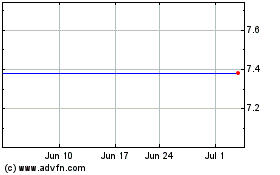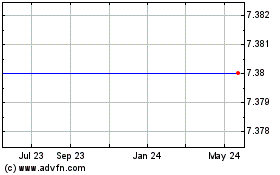Definitive Materials Filed by Investment Companies. (497)
June 14 2013 - 3:07PM
Edgar (US Regulatory)
|
SUPPLEMENT TO THE CURRENTLY EFFECTIVE PROSPECTUS
|
|
|
|
|
|
|
|
|
|
DWS Strategic Government Securities Fund
|
The following disclosure is added to the ”PRINCIPAL INVESTMENT STRATEGY” section of the summary section:
Interest rate strategy.
In addition to the fund’s main investment strategy, portfolio management also may seek to enhance returns by employing a rules–based methodology to identify interest rate trends across developed markets using derivatives, in particular buying and selling interest rate futures contracts. In implementing this strategy, portfolio management may utilize a proprietary rules–based interest rate futures index that measures the performance of the long/short allocations to a basket of six equally weighted interest rate futures indices: Australia, U.S., Japan, Switzerland, U.K., and Euro. Portfolio management applies the methodology to determine which interest rate futures from the most liquid currencies are trending positively or negatively, and purchases or sells interest rate futures accordingly.
The following disclosure is added to the ”PRINCIPAL INVESTMENT STRATEGY” section of the ”FUND DETAILS” section of the fund’s prospectus:
Interest rate strategy.
In addition to the fund’s main investment strategy, portfolio management also may seek to enhance returns by employing a rules–based methodology to identify interest rate trends across developed markets using derivatives, in particular buying and selling interest rate futures contracts. In implementing this strategy, portfolio management may utilize a proprietary rules–based interest rate futures index that measures the performance of the long/short allocations to a basket of six equally weighted interest rate futures indices: Australia, U.S., Japan, Switzerland, U.K., and Euro. Portfolio management applies the methodology to determine which interest rate futures from the most liquid currencies are trending positively or negatively, and purchases or sells interest rate futures accordingly.
For the purpose of complying with the 80% test, the fund does not use the notional value of a derivative instrument, but rather, uses the “mark–to–market” value (
i.e.,
the unrealized net gain or loss on an open derivative instrument) of the derivative instrument. The “mark–to–market” value of a derivative instrument will not be treated as an investment in securities backed by the full faith and credit of the US government. By calculating the 80% test on the basis of “mark–to–market” value, rather than the notional value, of derivative instruments, the fund may invest a greater percentage of its assets in such derivative instruments than would otherwise be the case.
Although the fund’s aggregate notional market exposure from derivatives employed as part of the interest rate strategy may equal up to 100% of the fund’s assets, the fund normally limits the net notional value of all open interest rate strategy related derivatives instruments, after aggregating the fund’s long and short positions, to 20% of the fund’s net assets. In addition, the net “mark–to–market” value of all open interest rate strategy related derivatives instruments, plus any required initial margin payments, is normally expected to be less than 5% of the fund’s net assets. There can be no assurance, however, that these limits will prevent the fund from incurring losses due to its use of interest rate related derivative instruments.
The following replaces similar disclosure contained in the ”PRINCIPAL INVESTMENT STRATEGY” sections of the summary section and the ”FUND DETAILS” section of the fund’s prospectus:
Derivatives.
Outside of the interest rate strategy, portfolio management generally may use futures contracts or interest rate swaps, which are types of derivatives (a contract whose value is based on, for example, indices, currencies or securities), for duration management (i.e., reducing or increasing the sensitivity of the fund’s portfolio to interest rate changes). In addition, portfolio management generally may use (i) options on US government agency mortgage–backed to–be–announced securities or total return swaps to seek to enhance potential gains; or (ii) options on interest rate futures to hedge against potential adverse interest rate movements.
The fund may also use various types of derivatives (i) for hedging purposes; (ii) for risk management; (iii) for non–hedging purposes to seek to enhance potential gains; or (iv) as a substitute for direct investment in a particular asset class or to keep cash on hand to meet shareholder redemptions.
The following disclosure is added to the ”MAIN RISKS” sections of the summary section and the ”FUND DETAILS” section of the fund’s prospectus:
Interest rate strategies risk.
The success of the interest rate futures strategies depends, in part, on the effectiveness and implementation of portfolio management’s proprietary models. If portfolio management’s analysis proves to be incorrect, losses to the fund may be significant, possibly exceeding the amounts invested in the futures contracts. The risk of loss is heightened during periods of rapid rises in interest rates.
Please Retain This Supplement for Future Reference
June 14, 2013
PROSTKR-270
Feihe International, Inc. (NYSE:ADY)
Historical Stock Chart
From Mar 2024 to Apr 2024

Feihe International, Inc. (NYSE:ADY)
Historical Stock Chart
From Apr 2023 to Apr 2024
